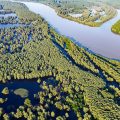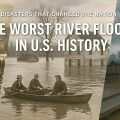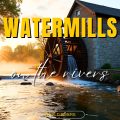River Flooding Isn’t a Disaster—It’s Nature Doing Its Job
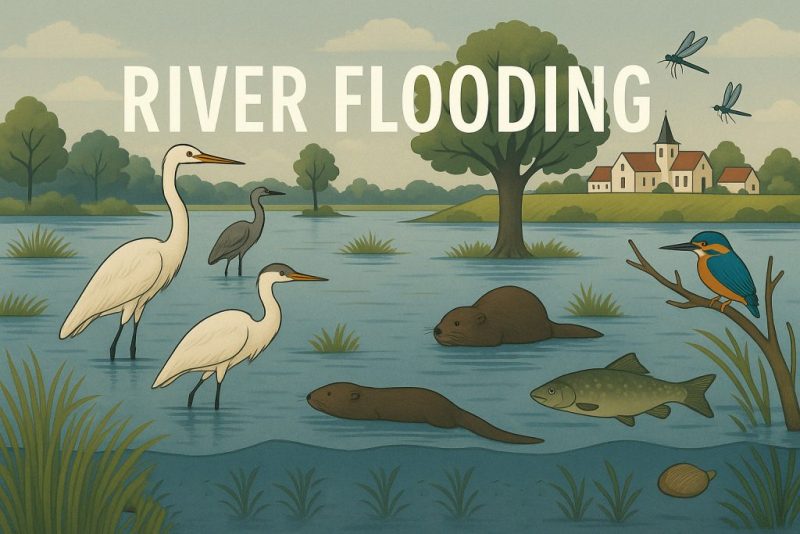
Floods have ravaged homes, lives, and landscapes—but what causes rivers to overflow, and what’s the real story behind these disasters?
In recent years, we’ve witnessed devastating images of destruction caused by floods—entire neighborhoods submerged, homes swept away, lives lost.In this context, we’re talking specifically about river flooding. When rivers overflow their banks, the consequences can be catastrophic. But what lies behind these powerful events?
What’s the real story of floods—and why do they happen in the first place?
When Rivers Rise: Understanding the Force of Flooding
Rethinking Floods: The Problem Isn’t Water—It’s Where It Goes
Before we can truly understand floods, we need to separate two things: the flood itself and the damage it causes.
For centuries, human civilization has fought against flooding. Seen as a threat, a force to be conquered, we poured our hopes into technology, believing we could outsmart and control Mother Nature. But in many cases, our attempts to block floods have backfired—amplifying the very destruction we sought to avoid.
The first change must be in mindset.
We can’t “win” against nature. We can’t stop floods from happening. What we can do is learn to live with them—wisely, respectfully, and in balance.
Floods are natural. They are essential.
Our goal shouldn’t be to eliminate them, but to prevent them from reaching places they don’t belong—like our homes and cities.
Ironically, we must allow floods to return to where they do belong: the natural floodplains.
Flooding these areas serves two crucial purposes:
It reduces pressure on our built infrastructure, sparing human settlements from disaster.
It nourishes ecosystems, sustaining biodiversity and offering what scientists call ecosystem services—the hidden benefits nature provides for free, from filtering water to supporting pollinators.
We’ll explore those benefits more deeply in future posts.
But for now, remember: Floods are not the enemy. Mismanagement is.
Understanding the Nuance: When Water Becomes a Disaster vs. a Natural Process
The terms flood and flooding may seem interchangeable, but they highlight different aspects of the same phenomenon. A flood is usually used to describe a specific event that causes damage—it’s sudden, disruptive, and often tied to destruction of homes, infrastructure, or landscapes. When we hear about a flood, we think of a catastrophe: water rushing into towns, sweeping away roads, and leaving devastation behind. It’s closely linked to emergency situations and aftermath.
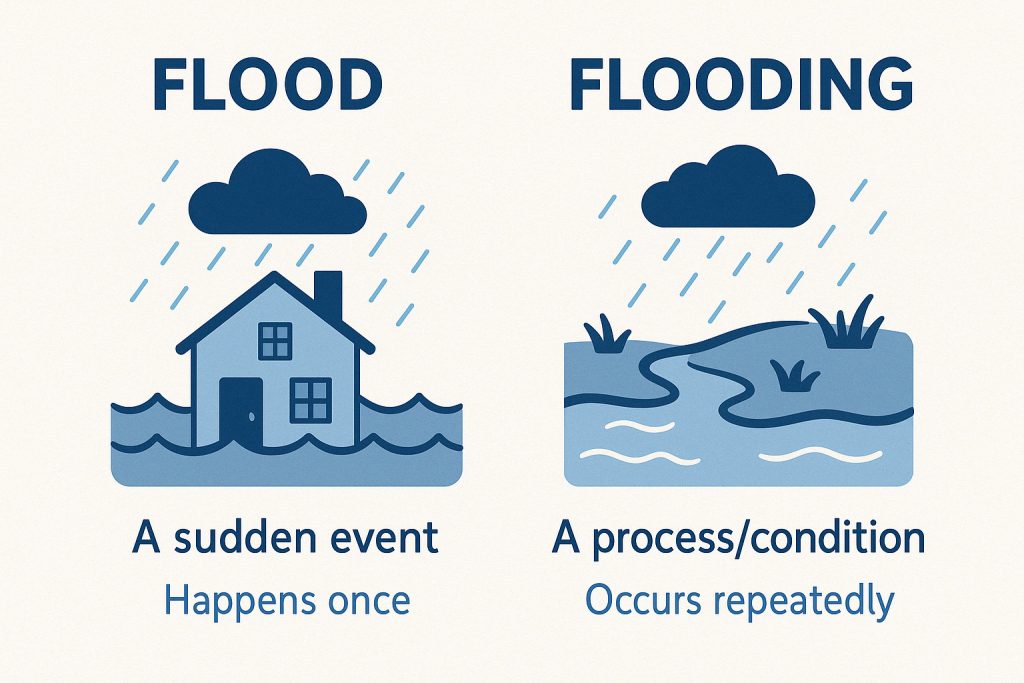
In contrast, flooding refers more to the natural process or condition of water spreading into areas it normally wouldn’t occupy. It can be gradual or seasonal, and while it may lead to damage, the word itself isn’t inherently negative. For example, we might talk about seasonal flooding in river deltas or wetlands, acknowledging it as part of a predictable, natural cycle. So, while flood often emphasizes the impact and consequences, flooding focuses on the presence and movement of water as part of a broader environmental pattern.
Natural, Just Like Rain
Flooding is not a disaster—it’s a rhythm of nature.
River floods are as natural as falling rain or melting snow. Since the moment water first condensed on Earth and the hydrologic cycle began, rivers have overflowed their banks. It’s a story as ancient as the planet itself.
There are many types of river floods, shaped by climate, topography, and geology. But in lowland landscapes, seasonal flooding is not only normal—it’s essential.
Take the Danube River as an example.
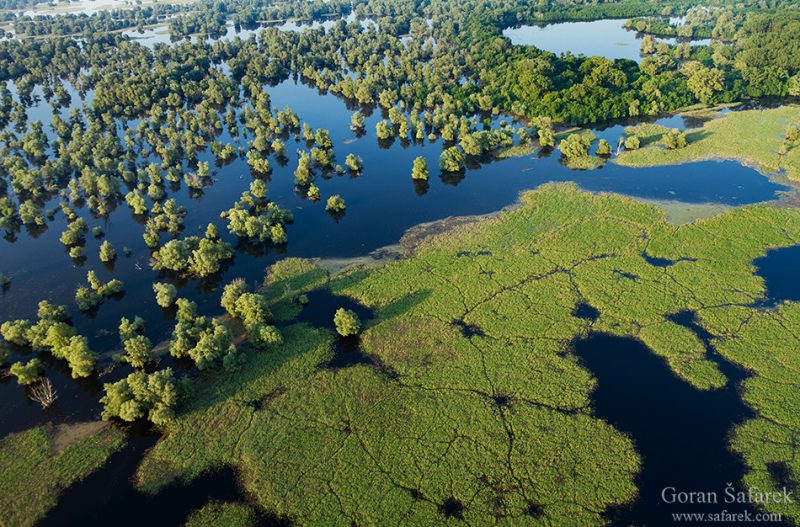
Every spring or early summer, the Danube swells with snowmelt and rainfall. When it becomes too full, it spills gently over its banks into Kopački Rit, one of Europe’s largest remaining floodplains. Reeds, sedges, and willow forests soak up the water in a slow, deliberate rhythm.
This annual pulse isn’t chaos—it’s balance.
Floodwaters are held in vast natural basins, where they slowly sink into the land, nourish ecosystems, and recharge the earth.
Look closely:
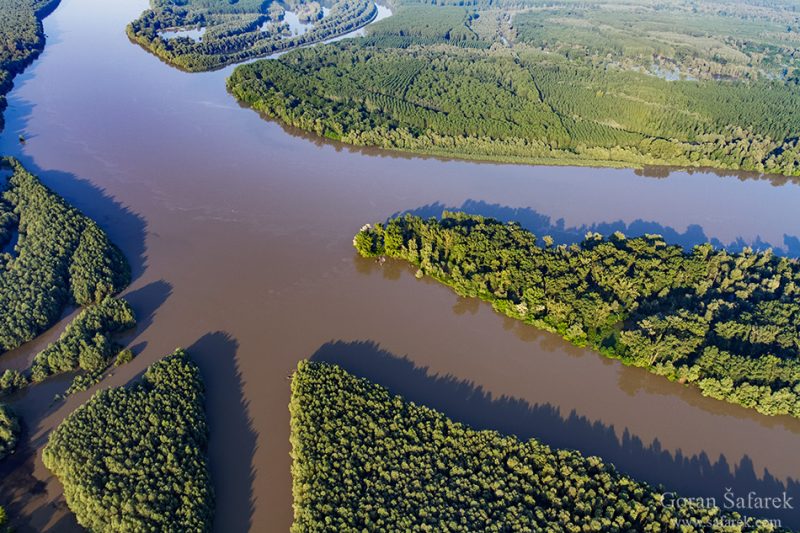
During a flood, the Danube doesn’t just overflow—it breathes, spreading through old channels and side branches, flowing deep into the floodplain.
This is nature at work. Not a threat to control—but a pattern to respect.
A Smarter Approach to Flood Protection Is Emerging
After decades of relying only on technical flood-control measures—like levees, dams, and concrete walls—a new way of thinking is gaining ground:
Let rivers flood their natural floodplains.
Why?
✅ Because it reduces pressure on human settlements.
✅ Because it protects infrastructure by keeping floods where they belong.
✅ Because it preserves biodiversity, offering a home for countless species.
Today, much of our natural floodplains have been lost—drained, developed, or confined—leading many to view floods as rare, destructive anomalies rather than essential parts of a river’s rhythm. But let’s be clear: natural flooding is not the enemy. It’s the damage caused by poor land use and misplaced infrastructure that turns a flood into a catastrophe. We cannot stop the rain or snowmelt, and thus, we cannot stop natural floods. What we can do is adapt—learning to live with water, not against it.
For decades, our response to floods relied solely on technical solutions—concrete barriers, levees, and channels. But a new, wiser approach is gaining ground: give rivers back their natural floodplains. When rivers are allowed to spill into these buffer zones, communities and infrastructure face far less risk. And as a bonus, these revitalised floodplains become vibrant havens for wildlife, nurturing biodiversity while keeping us safer.
Schematically this is shown here:

In conclusion, while the natural rhythm of rivers may bring floods as inevitable forces of nature, the scale of their devastation often stems from human choices—settling in vulnerable areas, disrupting natural landscapes, and neglecting sustainable planning.
As Gilbert F. White, the renowned geographer and pioneer of floodplain management, aptly stated: “Floods are ‘acts of God’. But flood losses are largely acts of man.” His words remain a powerful reminder that resilience lies not just in reacting to disasters, but in how wisely we prepare for them.
